Clementine from Telltale’s Walking Dead Games: Season 1

When thinking of heroes/heroines, children do not often come to mind. The term “hero” creates an images of a person taking control and power; making important, necessary decisions to solve problems in their path. Children usually do not have power or control of their life, and rely on adults fully in order to survive; which is why it can be difficult to think of a young child as a hero. However, in situations where people have to lean on all members of their community to survive, such as a zombie apocalypse, some children step up to the plate and offer their help. For instance, Clementine in Telltale’s Walking Dead games is thrown into a violent world between the living and undead and shows everyone that she is capable of more than people expect; and ultimately proving she is a hero.
Clementine’s Introduction
Imagine being thrown into the zombie apocalypse at only eight years old. Imagine being uncertain of if your parents will come back or are even alive. Imagine hiding in a tree house because your babysitter is now a flesh eating monster. Imagine being completely alone during all of this. This is the exact situation that Clementine is thrown into.
The Telltale Walking Dead games starts out in the perspective of a man named Lee. Lee meets Clementine early on in the game, when she mistakes him for her father. Clementine then comes to Lee’s rescue, by handing him a weapon, when he gets ambushed and pinned by her zombified babysitter. Showing the player, within minutes of meeting her, that she will put herself out there to help others.
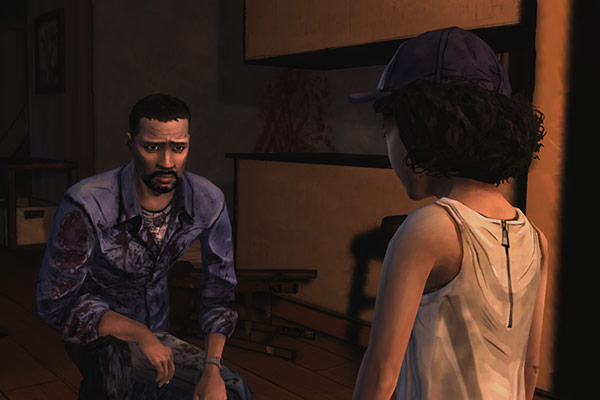
Lee and Clementine start traveling together after this. Clementine wants to travel to Savanah, where she believes her parents are still alive (the player finds out her parents are dead when listening to the house’s voicemail; the father got bit). Because Clementine is only a child, Lee keeps the blunt truth from her for a while (depending on how the player wants to play). Clementine, in the first season, is often shielded from “bad” things because of her age. The adults wanted her to have some form of a childhood, since she is growing up in the zombie apocalypse, and will have to grow up earlier to survive. However, even though the group tries to shield Clementine from the violence of their world, Clementine surprises them with her adaptability and bravery.
For example, in one scene further into the game, Clementine’s group is trapped outside a safe house with an injured member while zombies are approaching. As the adults start arguing about how to get into the house, Clementine crawls through a doggie door entrance and unlocks the door.
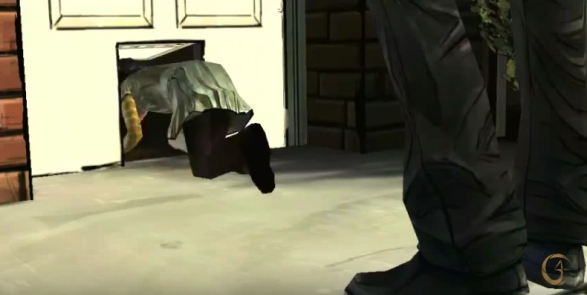

Depending on the player, they can either get mad at Clementine for putting herself in danger or praise her for quick thinking. Clementine risked herself by going into the house, alone, unaware of any zombies that might have been sneaking around. But, she knew that the longer they wait and argue outside, the more danger the group is put in. She makes an important decision without any push from the adults and in result saves her group.
In addition to performing heroic actions, Clementine also stands up for others, even those who have wronged her. In a tense situation, a group member named Ben reveals he was the one who was paying off bandits in order to protect the group (but ultimately resulted in three people dying). The group starts to take a vote whether or not to kick Ben out and most of the adults vote in favor of it until Clementine speaks up.

Although Ben messed up in the past, (he didn’t help Clementine when zombies were coming toward them and runs away leaving Clementine in danger) Clementine still stands up for him and voices her opinion in this important decision. Clementine’s words cause some adults to change their minds and give Ben a second chance, showing how much power Clementine has in the group (even for a child).
Critical Race Studies view
Telltale’s Walking Dead games come with a long list of victories and fails in regard to race. One of the main victories is the main playable character of this game is Lee, a black adult male. The majority of main characters in games are white males, so it was very exciting to players to have a change. However, the intention was to make the game with two black protagonists, Lee and Clementine. Unfortunately, Clementine race has been recognized as a fail and brings forth the issue of African american characters being made intentionally racially “ambiguous”.
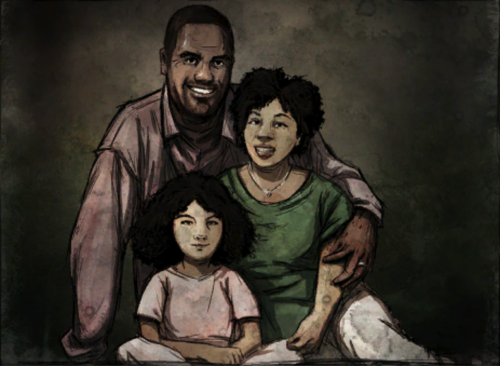
This is a picture of Clementine and her parents. Clementine’s father is very dark-skinned, while the mother is more light-skinned. However, Clementine’s character looks more white or Asian American (an opinion that be found on SEVERAL discussion boards regarding Clementine’s race). Even though her hair is a big indicator of her race, her skin color ended up confusing a lot of gamers. The lead animator of the game ended up clearing up these questions in an interview, confirming that Clementine is African American.
Is Clementine’s Design Racist?
The problem is not that black people cannot have very light skin. The problem is that most video games characters are white and to create an “African American” girl and make her so fair skinned brings up the question, “Why did they make her look so white?” In the article linked above, the author speculates that because Clementine is given such an “innocent and pure” persona, the designers purposefully gave her lighter skin.
Using a quote from Audre Lorde’s, “Age, Race, Class, and Sex: Women Redefining Difference” on page 118: “To allow women of Color to step out of stereotypes is too guilt provoking, for it threatens the complacency of those women who view oppression only in terms of sex.”
Did they make Clementine lighter skinned because their stereotype for darker skinned children did not match the persona they were going for? Maybe not. But think about how this looks to people who play the game. A girl with two black parents appears white in most scenes, with only her hair resembling her parents race. And why does this matter? Because the developers created Clementine to be so racially ambiguous to please an audience that maybe they believed would have liked a light skinned girl better. (Not to mention casting an white adult woman to voice a eight year old African American girl) These designers had a great opportunity to do what VERY FEW games have done so far, have two main characters that are African American. And arguably they did do that, just in a very poor way.
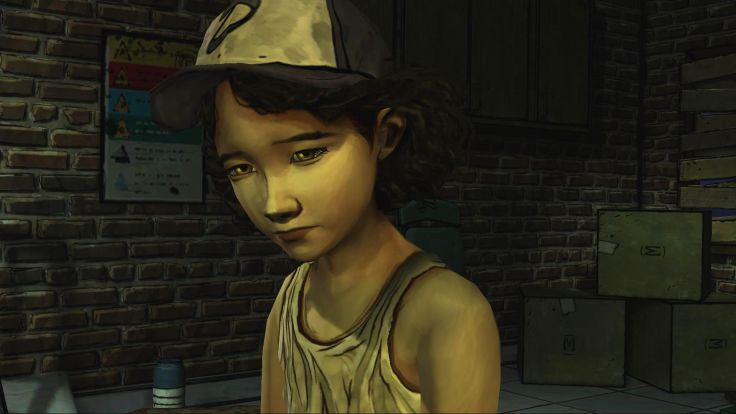
“Change means growth, and growth can be painful. But we sharpen self-definition by exposing the self in work and struggle together with those whom we define as different from ourselves, although sharing the same goals. For Black and white, old and young, lesbian and heterosexual women alike, this can mean new paths to our survival.” (Lorde, pg. 123)
Feminist Criticism view
Using Toril Moi’s work, “Feminist, Female, Feminine” to analyze Clementine’s character is a bit tricky. First of all, Clementine’s journey takes place in a world where most social constructs are forgotten; anarchy reigns and survival is the highest priority. In a zombie scenario elements of the patriarchy might linger, but would not take a key role in the world. Women wouldn’t be forced to stay at home, or bear children; they would be expected to help the community survive like any man would. So the feminist part, I believe, would not apply to Clementine. Secondly, Moi focuses more on the feminist political movement and feminist texts; which again doesn’t really matter in a zombie apocalypse game.
However, when looking at the game dialog, several of Moi’s characteristics of female and feminine can be applied. Clementine’s character, in particular, is used in the game as a little girl that the player is tasked with taking care of. If the player has to take care of a little boy than a girl, the game would be very different (in my opinion). The characters in the game treat Clementine very delicately because she is a girl (also because she is very young), and her feminine presence almost has a calming effect on adults in the group (who are often yelling and arguing with each other). The writers have designed her as a “pure” character who needs to be protected, but is also brave and helps others. They use Clementine as a “damsel in distress” in a lot of scenes, but then let the player groom her skills (and her hair) to make sure she can take care of herself and survive without him.

The game dialog indicates that Clementine is a strong character (in an emotional and mental sense) which is a “newer” characteristic among female characters, especially very young ones. Clementine has to survive in a world with monsters who want to eat her. Not to mention, she deals with the death of her parents and her primary caretaker, Lee, in a very short period of time, but never gives up. Not many children could do that.
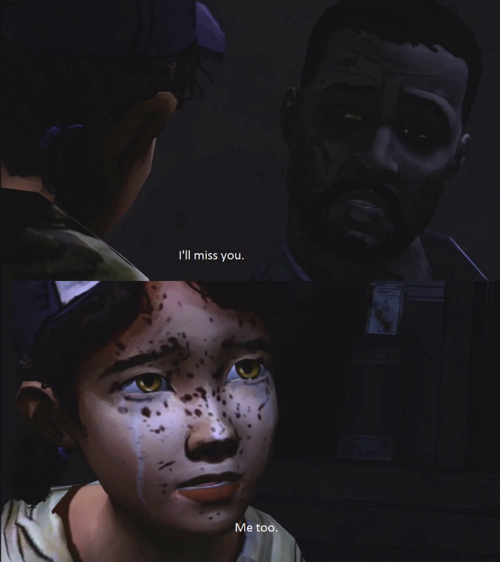
Conclusion
Being a hero is not as simple as performing a few brave actions or standing up for others once or twice. Being a true hero requires a person to be continuously brave and always stand up for what you believe in. Clementine shows again and again that she is a hero at only eight years old. She pushes herself to do good. A final example of this is when her group comes across an “abandoned” car filled with much needed supplies and the group decides to take it all. Clementine voices to everyone that the stuff belongs to someone else, and it is wrong to take it. Clementine knows that survival is important, but she also knows that taking the supplies is like killing the people it belongs to. Clementine is not only a heroine, but she is a heroine in the zombie apocalypse when most people are out for themselves. She is an unlikely hero in an amazing game.

(Season 2 of Telltale’s Walking Dead games features Clementine as the main playable character! So her hero’s journey can continue, at the will of the player).